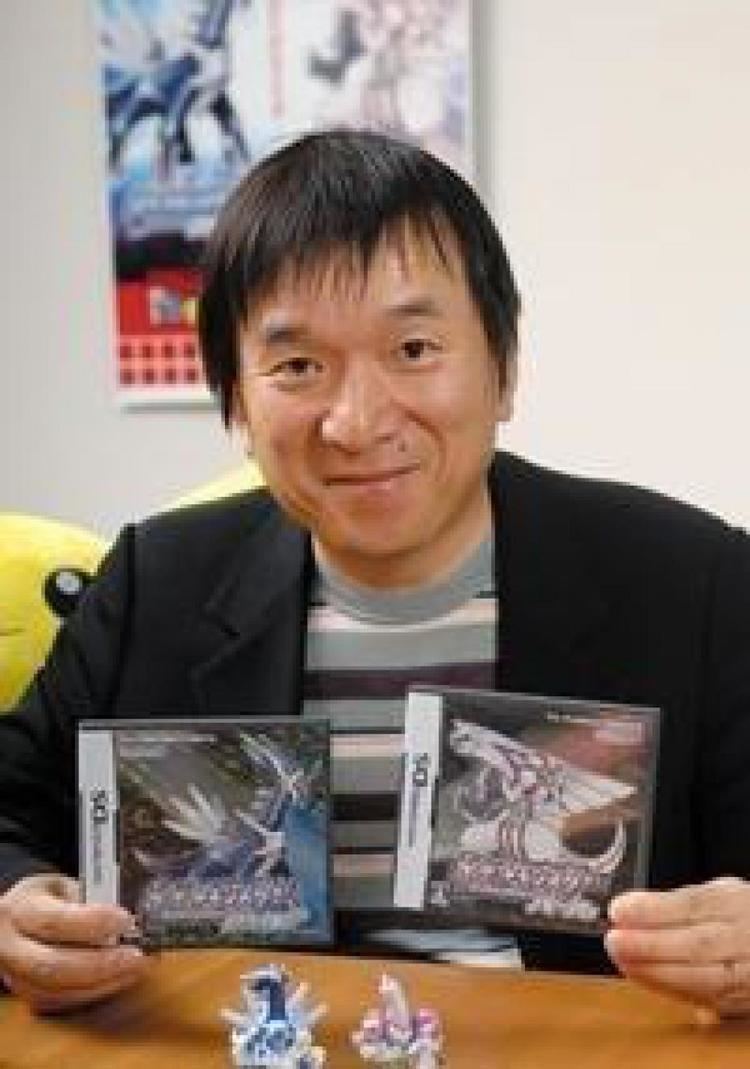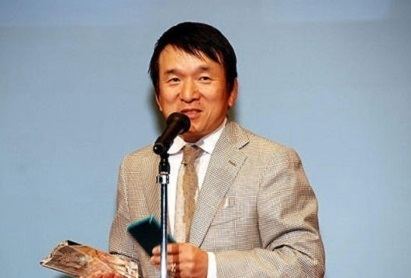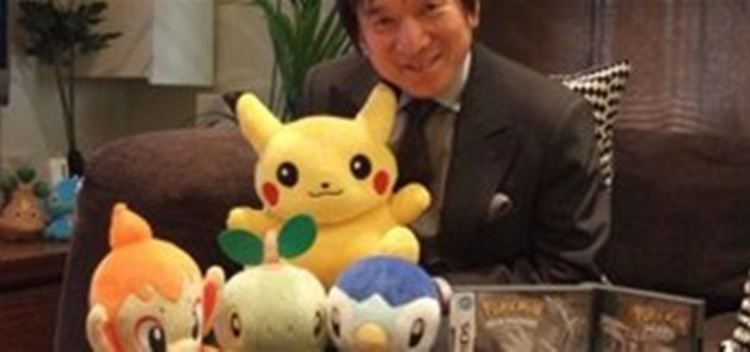Native name 田尻 智 Name Satoshi Tajiri | Occupation Video game designer Role Video Game Designer Years active 1989–present Home town Machida | |
 | ||
Known for Creating the Pokemon franchise Movies Pokemon: The First Movie, Pokemon: Giratina and the Sky Warrior Books Pokemon TV Animation Comic: I Choose You!, Electric Pikachu Boogaloo Video games Pokemon Red and Blue, Pokemon Diamond and Pearl, Pokemon Gold and Silver, Pokemon Ruby and Sapphire, Pokemon FireRed and Leaf Similar People Ken Sugimori, Junichi Masuda, Kunihiko Yuyama, Shigeru Miyamoto, Rica Matsumoto | ||
Cgr s on this day in gaming satoshi tajiri born august 28
Satoshi Tajiri (Japanese: 田尻 智, Hepburn: Tajiri Satoshi, born August 28, 1965) is a Japanese video game designer best known as the creator of Nintendo's Pokémon franchise and the founder of video game developer Game Freak. A fan of arcade games, Tajiri wrote for and edited his own video gaming fanzine Game Freak with Ken Sugimori, before evolving it into a development company of the same name. Tajiri claims that the joining of two Game Boys via a link cable inspired him to create a game which embodied the collection and companionship of his childhood hobby and special interest, insect collecting. The game, which became Pokémon Red and Pokémon Green, took six years to complete and went on to spark a multibillion-dollar franchise which reinvigorated Nintendo's handheld gaming. Tajiri continued to work as director for the Pokémon series until the development of Pokémon Ruby and Sapphire, when he changed his role to simply executive producer.
Contents
- Cgr s on this day in gaming satoshi tajiri born august 28
- Pokemon facts did you know part 6 the creation of pokemon
- Early life
- Career
- Inspirations
- Awards and recognition
- References

Tajiri has also worked for other projects including Mario spin-offs and The Legend of Zelda. His work has earned him numerous accolades from his peers.

Pokemon facts did you know part 6 the creation of pokemon
Early life

Tajiri was born on August 28, 1965, in Tokyo. Tajiri grew up in Machida, Tokyo, which at the time still maintained a rural atmosphere. As a child, Tajiri enjoyed insect collecting as a hobby, which would be an inspiration for his later video game work. Other children called him "Dr. Bug", and he wanted to become an entomologist. As urban areas of Japan spread and more land was paved over, habitats for hunting bugs were lost. Tajiri wanted his games to allow children to have the feeling of catching and collecting creatures as he had.
He became fascinated with arcade games as a teenager, though his parents thought him a delinquent for this pastime. He particularly enjoyed playing Taito's Space Invaders, which drew him into other video games. His interest eventually evolved into attempting to plan his own games. He took his Famicom apart to see how it worked, and won a contest for a video game idea sponsored by Sega.
Because of his fascination with video games, Tajiri frequently cut classes and nearly did not graduate high school. This confused and upset his parents, who felt that he was discarding his own future. His father attempted to get him a job at The Tokyo Electric Power Company, but Tajiri declined to take the position. He took make-up classes and eventually earned his high school diploma. Tajiri did not attend college but instead attended a two-year technical degree program at the Tokyo National College of Technology, where he majored in electronics and computer science.
Career
At age 17, Tajiri began writing and editing a fanzine called Game Freak from 1981 to 1986, focusing on the arcade game scene. Game Freak was handwritten and stapled together. Nonetheless, Ken Sugimori, who later illustrated the first 151 Pokémon, saw the magazine at a dōjinshi shop, and became involved. As more contributors came to Game Freak, Tajiri began to realize that most games were lacking in quality, and he and Sugimori decided the solution was to make their own games. Tajiri studied the Family BASIC game programming package, to better grasp the concepts of Famicom game design. He then purchased the requisite hardware for game development. Tajiri and Sugimori evolved the magazine into the video game development company Game Freak in 1989. Soon after, the two pitched their first game, an arcade-style game called Quinty, to Namco, who published the game. Tajiri also wrote as a freelance writer for the magazine Famicom Hisshōbon, later called Hippon, and reviewed arcade games for Family Computer Magazine and Famicom Tsūshin.
Tajiri first conceived the idea of Pokémon in 1990. The idea came together after he saw a Game Boy and the ability to communicate between Game Boys, and Tajiri decided Pokémon made the most sense on the handheld console. Tajiri pioneered the idea of connectivity between handheld game consoles, by suggesting that Game Boys could use their link cables in order to have friends do more than simply play against each other.
When he first pitched the idea of Pokémon to Nintendo, they could not quite grasp the concept, but were impressed enough with Tajiri's game design reputation that they decided to explore the concept. Shigeru Miyamoto began to mentor Tajiri, guiding him during the creation process. Pokémon Red and Blue took six years to produce, and nearly bankrupted Game Freak in the process; often, there was barely enough money to pay the employees. Five employees quit, and Tajiri did not take a salary, instead living off of his father's income. Investment from Creatures Inc. allowed Game Freak to complete the games, and in return, Creatures received one-third of the franchise rights.
Between the approval and completion stages of the project, Tajiri assisted in the design of two Mario spin-off games for Nintendo: Yoshi and the Japanese-only release Mario & Wario. He also worked on 1994's Pulseman.
Once the games were completed, very few media outlets gave it attention, believing the Game Boy was a dead console; a general lack of interest of merchandising convinced Tajiri that Nintendo would reject the games. The Pokémon games were not expected to do well, but sales steadily increased until the series found itself among Nintendo's top franchises. Rumors of a hidden Pokémon creature named Mew, which could only be obtained by exploiting programming errors, increased interest in the game. Tajiri had included Mew in the game in order to promote trading and interaction between players, but Nintendo was not aware of the creature upon release. The franchise helped Nintendo's waning sales. Tajiri deliberately toned down violence in his games. In this vein, he designed Pokémon creatures to faint rather than die upon their defeat, as he believed it was unhealthy for children to equate the concept of death with losing a game. After the completion and release of Red and Blue in Japan, Tajiri later worked on 1997's Bushi Seiryūden: Futari no Yūsha. Tajiri continues to be involved in the more modern Pokémon titles as well. In the most recent incarnations, he supervised the process from start to finish and approved all the text. While developing games, Tajiri works irregular hours, often laboring 24 hours at a time and resting 12 hours.
Inspirations
Tajiri cites Shigeru Miyamoto as a major influence, thinking of him as a sort of mentor. For this reason, his developmental style closely matches that of Miyamoto. In the Pokémon anime, the main character is named Satoshi, and his rival is Shigeru.
Tajiri drew much of his inspiration from old Japanese shows and anime, including Godzilla and Ultraman. He has stated that if he did not design video games, he would most likely be in the anime field.
Awards and recognition
IGN named Tajiri one of the top 100 game creators of all time, mainly for his ability to have built Pokémon into a "worldwide phenomenon". Electronic Gaming Monthly credited Tajiri as one of the 10 most influential people who made the modern video game market. Video game magazine Edge placed Tajiri on their list of the "Hot 100 Game Developers of 2008". Tajiri, alongside Tsunekazu Ishihara, received the Special Award from the Computer Entertainment Developers Conference in 2011. The Economist has described Pokémon as "Japan’s most successful export."
